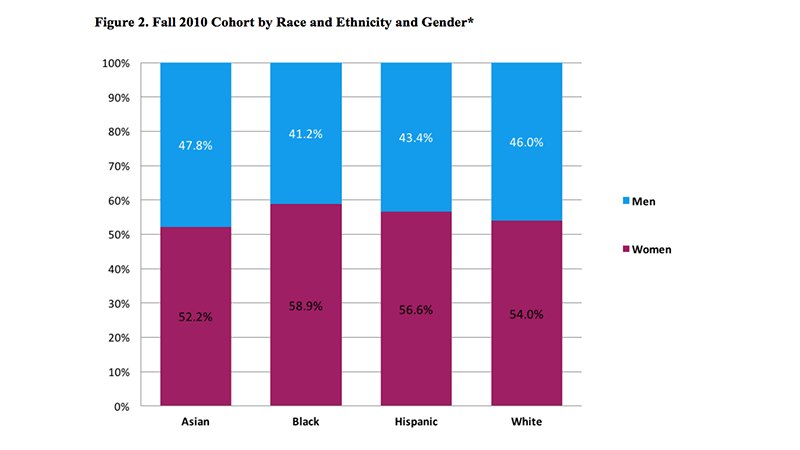The National Student Clearinghouse took a major step today with the release of a report that for the first time breaks out degree and certificate completion by race and ethnicity.
The National Student Clearinghouse report, Signature 12 Supplement: Completing College: A National View of Student Attainment Rates by Race and Ethnicity—Fall 2010 Cohort, supported by Lumina Foundation, is different from what we can learn from currently available federal data.
This report represents a recent national look at graduates whether they started as a full- or part-time student, at a two-or four-year institution, or completed at a different institution than where they began. It then disaggregates the data by gender, age, enrollment intensity, and most importantly by race and ethnicity. It also represents an unduplicated count, following students as they move from institution to institution. The report covers students who started college in 2010 and follows them through 2016, meaning it’s more current than what we usually see in higher education research.
Reaching the goal will require eliminating the systemic disparities that plague education after high school.
This report drives home the importance of Lumina’s focus on student success and our Equity Imperative, which acknowledges that achieving the goal of 60 percent of Americans with college degrees, workforce certificates, industry certifications and other high-quality postsecondary credentials by 2025 will require eliminating the systemic disparities that plague education after high school. The current system must be redesigned to give all Americans, regardless of race, ethnicity, or income, the opportunities that completing postsecondary education provides.
The report reinforces what previous researchers have demonstrated: Large racial and ethnic achievement gaps exist. But this nationally representative student-level report provides the field with unduplicated data that has not previously existed. Here are a few data points that stuck out and gave me pause:
The completion gaps are largest and most disturbing among traditional-age college students.
- For those who start in a bachelor’s (or, four-year) program, 62.4 percent had completed a degree or certificate within six years. However, that’s true of only 45.9 percent of African-Americans and 55 percent of Hispanics. (Whites completed at a rate of 67.2 percent and Asians at a rate of 71.7 percent.)
- For those who start in any type of college—community college or four-year institution—54.8 percent complete a certificate or degree within six years. However, only 38 percent of African-Americans and 45.8 percent of Hispanics can say the same. (Whites completed at a rate of 62 percent and Asians at a rate of 63.2 percent)
- African-American men have the lowest completion rate, at 33.5 percent within six years, as well as the highest rate of leaving higher education without a degree within six years (49.9 percent). For comparison, Asian women have the highest completion rate (68.9 percent) and the lowest stop-out rate (16.2 percent).
- When we look at pathways, the picture is even bleaker. Among students who start at a community college and transfer to a bachelor’s-granting institution, with or without an associate degree, only one in 12 African-American students had completed a bachelor’s degree within six years and only one in 10 Hispanics. Meanwhile, 20 percent of white students had completed bachelor’s degrees as had 25 percent of Asians.
Completion rates for those who begin college at age 24 or older are low across the board. And while gaps still exist, they are much lower than for traditional-aged students.
Among African-American and white students, the gap is 12.3 percentage points compared with 24 points among traditional students. At the same time, among Hispanic and white adults the gap is 9.1 percentage points compared with 17.5 points among younger students. The specific six-year completion rates for adults (starting at age 24) were whites, 42 percent; African-Americans, 29.7 percent; and Hispanics, 32.9 percent.
There are more numbers in the report, which demonstrates the appalling gaps that exist in completion by race and ethnicity and drives home the fact that our postsecondary system must be improved so it can better serve all students regardless of race, ethnicity, or age. The Clearinghouse is committed to releasing this report as well as a report on persistence by race and ethnicity (due out next month) annually, allowing us to follow trend data. As more institutions begin to report race and ethnicity to the Clearinghouse—not enough do yet—the Clearinghouse will be able to disaggregate the data further.
While the data reported and gaps they reveal are no cause for celebration, the fact that we now have the data required to highlight these gaps is worth celebrating. I applaud the National Student Clearinghouse for making this data available so we can hone in on achieving fair and socially just results for ALL students, and I implore the field to use this data to work to eliminate the gaps that are now so evident.
